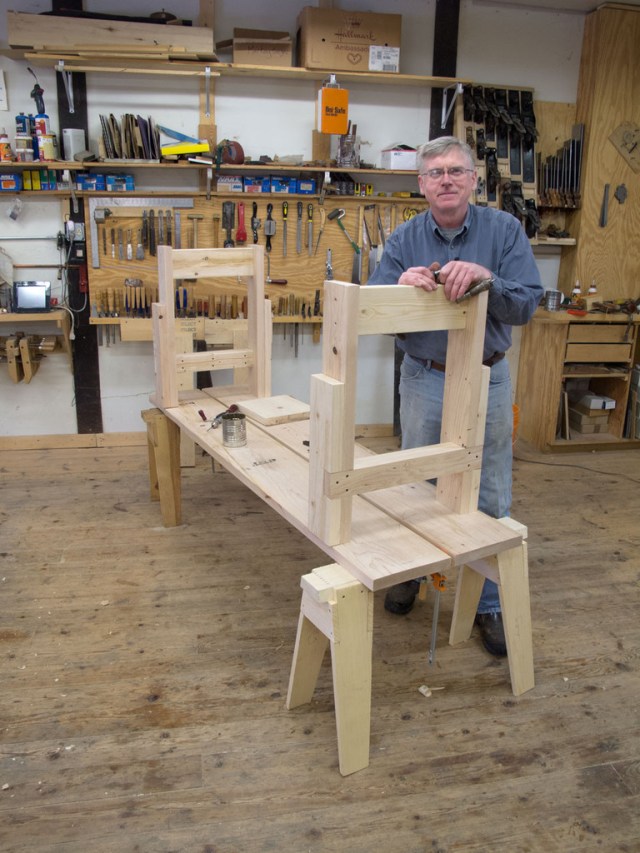
Mike Siemsen at the Mike Siemsen School of Woodworking is now accepting students for his third Hand Tool Immersion class on May 29 through June 5 at his shop in Chisago City, Minn. This low-cost, all-in, communal-cooking experience is designed to jump-start the hand skills of woodworkers who couldn’t normally afford a class.
Mike is an outstanding teacher. Funny (especially if you love corn). Very skilled. And a blast to hang out with. Just don’t get in his van (just kidding; John and I love his van).
All the details are below. If you can make it work, I promise you will not regret it.
— Christopher Schwarz
Hand Tool Immersion 101
- Date: five days May 29th through June 2nd
- Cost: $650
- Materials: Included
- Skill Level: Intermediate/all
Course Description
Back by popular demand! An intensive 5 day all-out immersion into handwork. The goal is to tune up your hand skills to as high a point as possible in five days. You will tune up your tools and use them to build a tool chest in which to haul them home. For those of you on a limited budget, we will be camping on the grounds of the school (please bring your own gear) and cooking communally in my house. There is a shower and places to camp. If you choose to stay in a hotel, that’s totally cool and understandable. Know that you are always welcome to hang out late into the evening working on your project. The school is open 24 hours a day for you. This class is limited to 12 people and is aimed at, but not limited to, 30-somethings needing a jump start into woodworking.
Tools
I’d like everyone in the class to have a complete tool kit when they finish the course. Below is a list of the tools needed for the class. If you want to purchase tools that you need for the class and would like help selecting tools or need recommendations on where to buy them e-mail me and I will be happy to help.
- No. 5 jack plane, such as a pre-war Stanley with a clean iron (no rust) and a tight chipbreaker.
- Low-angle block plane, such as Stanley 60-1/2 with a clean iron and movable toe piece.
- Wooden rabbet plane (skew or straight iron). Wedge needs to work.
- Card scraper.
- Large router plane, such as Stanley No. 71 or No. 71-1/2.
- Hand drill, sometimes called an “eggbeater,” such as a Millers Falls No. 2 or 5 with a 1/4” chuck and intact chuck springs (i.e. the jaws are spring-loaded and work)
- Brace with a 10” sweep. Good chuck with its springs still intact and a tight pad.
- Bevel-edge chisels with wooden handles (1/4”, 1/2” and 3/4”).
- 16 oz. hammer with a wooden handle. Striking face should be smooth and slightly crowned.
- Squarehead joiner’s mallet. We can make these during the class.
- 12” combination square that is square, locks tight and has clear markings.
- Marking gauge. The metallic ones, such as the Stanley No. 90, are preferred.
- Backsaw with a 10”- to 14”-long blade. Straight saw plate, comfortable wooden handle and little or no rust.
- Coping saw that takes pin-end blades and locks tight.
- 10” cabinet rasp (older and sharp is better).
Materials are included in the price of the class.